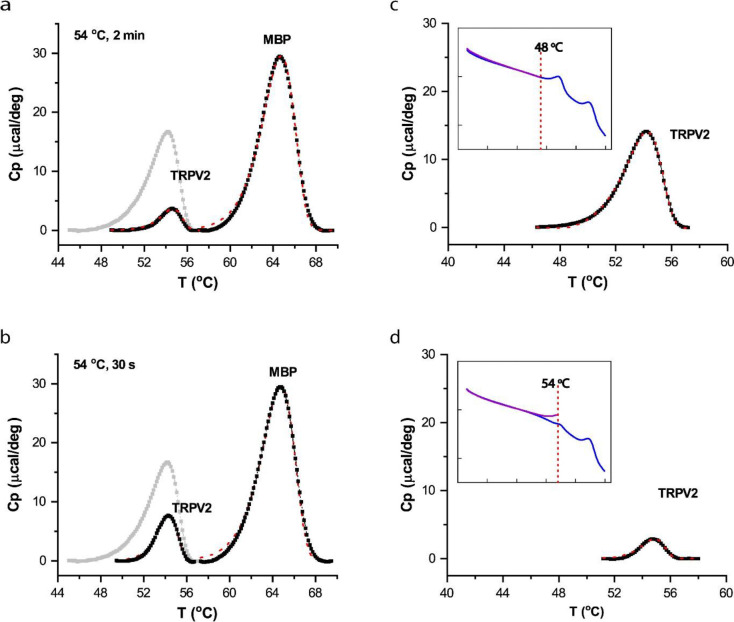Figure 3.
A,B) Independence of protein unfolding transition on DSC heating rate. Instead of being slowly heated up in DSC, samples were more rapidly preheated to target temperature (54 °C) in a thermocycler before loaded into DSC. Shortening heating duration did not prevent the unfolding transition. Panel A shows that a thermocycler heating for 2 min sufficed to significantly reduce DSC transition of TRPV2, while Panel B shows that even a 30-s treatment remained effective, causing significant unfolding of TRPV2 proteins. The thermograph of TRPV2 was displayed on a scale relative to the transition of the MBP tag. The grey trace shows control transition of TRPV2 (no prior heat treatment) for comparison. C,D) Stringent temperature dependence of DSC transition of TRPV2. Restricting initial DSC scan to a sub-transition temperature (48 °C) largely ameliorated irreversible loss of DSC transitions in repeated scans, indicating the temperature specificity of the transition and the independence on prolonged DSC heating (C). Accordingly, increasing scan temperature to 54 °C diminished the DSC transition in the repeated scan (D). Plotted are residual DSC transitions detected in the repeated scan, along with actual DSC scans (insets).

